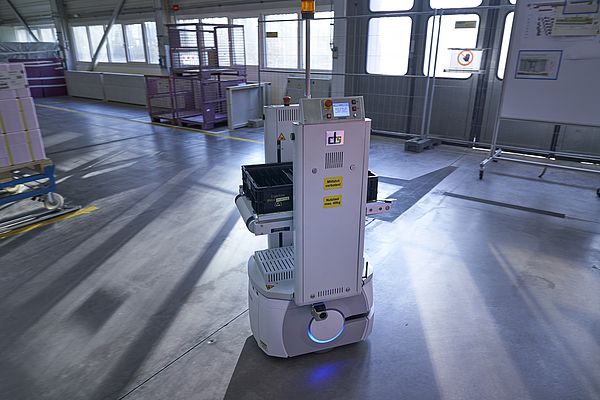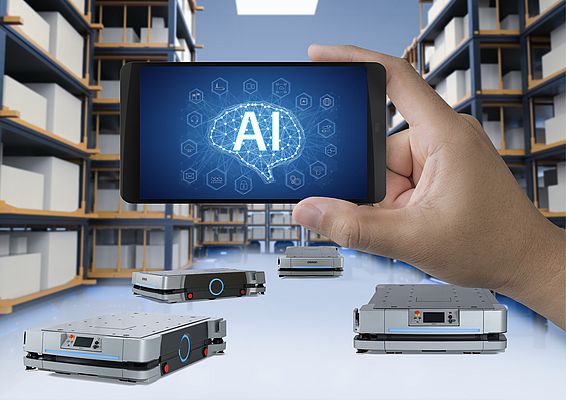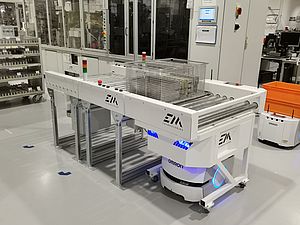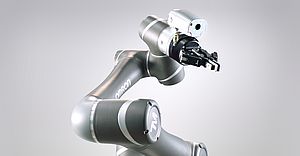New approaches, such as AI and integrated robotics, could reshape future production processes. Seven tips for automotive companies.
At the beginning of 2020, very few business leaders would have predicted the huge challenges that would hit companies over the next few months. With the disruption caused by Covid-19, the EU Commission now estimates that economic output in the Eurozone could crumple by 8.7 percent this year.
The automotive industry has been particularly affected, with the virus exacerbating the decline in sales. For example, the Center for Automotive Research (CAR) at the University of Duisburg-Essen forecasts that German vehicle manufacturers and suppliers could lose a quarter of their total workforce by 2030. A similarly gloomy picture is also emerging in the UK. In contrast, automotive supplier AMZ predicts that the growing demand for electric cars could lead to the creation of many new jobs.
The challenges facing manufacturers and suppliers mean that they will need to develop new strategies in order to future-proof their production and processes. These will increasingly include items such as innovative technologies, robotics, sensors, artificial intelligence (AI) and integrated solutions. Industry experts believe that the move from traditional car production to electro-mobility (e-mobility) is now much more feasible and will boost both the efficiency and sustainability of production processes.
European companies risk being left behind
In addition to declining sales and stringent regulations, the biggest challenges facing the European automotive industry include strong competition from Asia, along with pressure to provide innovation and sustainability. Many European providers are finding it hard to keep up with companies in China, Japan and South Korea.
Henry Claussnitzer, Business Engagement Manager Automotive at Omron Europe, comments: “There’s also the question of whether the industry depends too much on technologies such as batteries. One thing is certain: to be competitive, companies must reposition themselves as quickly as possible. Innovative and integrated strategies are essential. These will include robotics, high-performance sensor and control technologies; and also intralogistics, AI and machine learning.”
The need for a common vision
Alfred Pammer, Head of Factory Automation at cts GmbH, an Omron partner and system integrator, points out the many different national and international regulations with which automotive companies have to comply. “Sustainable production is becoming increasingly important,” he says. “At the same time, the industry mustn’t become over-regulated. A uniform international approach would make sense, as different country laws slow down processes and innovations and sometimes even block them. There’s a lot of catching up to do.”
The strict European data protection guidelines are a good example of the challenges faced by the industry. Alfred Pammer continues: “As artificial intelligence thrives on data analysis, for example, a better balance should be created here so that Asian markets don’t move ahead while European suppliers are increasingly left behind.” At the same time, it’s vital to constantly strengthen customers’ trust in a company’s brand and products. “Without a strong integration and technology partner,” he says, “the transformation from a traditional automobile manufacturer to a high-flexibility, low-volume e-mobility company won’t be feasible.”
Examples of transformative technology
Another topic that will become increasingly important to companies in the automotive sector is data analysis. Many new technologies, such as AI and the Internet of Things (IoT), require integrated and well-thought-out data strategies. One example is Predictive Maintenance: the maintenance of machines based on information collected at the machine level (‘at the edge’). Powerful software solutions are the key to ensuring connectivity and communication between the systems. Such technology also makes the transition to the factory of the future easier. For example, production lines can be ‘smartly’ connected to mobile robots, driverless transport systems (also known as automated guided vehicles or AGVs), cobots, ERP, MES etc.
A case in point is BMW. For greater flexibility and links between work processes, the company uses innovative transport and logistics concepts. These include mobile LD robots from Omron for transporting materials for production. These autonomous intelligent vehicles (AIVs) are equipped with a conveyor attachment developed by cts. The system integrator has developed a complete technology package, specifically tailored to BMW's requirements. It consists of the LD robots and conveyor attachments, plus software that connects the Enterprise Manager with the company's own ERP system. Similarly, Continental relies on AIVs made by cts. “The heart of Industry 4.0 is software, which brings everything together,” explains Alfred Pammer.
Jorge Pereira Hernández, General Manager of Keyland Sistemas de Gestión, also points out the growing importance to the e-mobility industry of smart robotics, including collaborative robots (cobots), interacting with other technologies. This approach will not only support efficiency and sustainability but will also offer a particularly quick return on investment (RoI). He says: “At the same time, companies benefit from standardised, optimised processes. The many different vehicle drive concepts require automated workflows and controls, as well as intelligent systems that support human employees and minimise errors. Automotive companies need to take action now.”
Conclusion
Henry Claussnitzer sums up that the use of robotics, AI, and sensor, image and vision technology in the factory of the future should always be viewed as a holistic overall structure: “A data-based approach will help European companies to act more cost-effectively and more competitively. Battery manufacturing is a good example, because it requires highly integrated systems and processes. An intelligent warehouse system flanked by mobile robots can significantly increase process efficiency while reducing manual effort as well as errors and waste.”





















